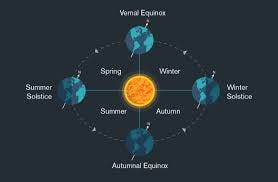An Astrologically Derived Date for Beltane 2025
Astrologer Maureen Richmond, Ph.D.
Beltane Defined
Observed by Pagans around the world, Beltane is a stirring spring festival celebrating the return of vegetational life through the expression of joy, passion, music and dance, the beauty of nature, flowers and greenery, cheerful colors, mating, romance, love, courtship, community, elemental nature spirits, and love of fairies. The observance of Beltane is thought by some scholars to go back as far as 1200 B.C.E, which is to say, more than 3000 years ago when the Celtic peoples of the British Isles and western Europe honored Beltane during the Iron Age.
In the twenty-first century, Beltane is a favorite seasonal celebration of Pagans following a wide range of lineages and paths. Traditionally celebrated on May 1 in the northern hemisphere, Beltane is one of the eight sacred points of the Pagan calendar. The Pagan calendar itself is a uniquely astrological concept worthy of thoughtful attention by any and all who recognize the astrological powers behind the human experience.
The Structure of the Pagan Calendar
The fundamental building blocks of the Pagan calendar are the equinoxes and solstices. These points in the cycle of the year are determined by astronomical constants far beyond the reach of human control. Products of the cosmic forces which decreed the arrangement of the solar system, the sizes and placements of the various planetary bodies, and the varying orbital speeds, the equinoxes and solstices are authentic expressions of cosmic principles working out in our solar system.
As viewed and experienced from the particular vantage point of planet Earth, the equinoxes and solstices occur at four distinct points in the year, dividing the year into four absolutely equal quarters. The half-way points in between the equinoxes and solstices constitute the remaining four points of the eight-point structure of the Pagan calendar.
A timekeeping mechanism built entirely on established and unchanging astronomical fact, the Pagan eight point calendar makes imminently greater sense than does the civil calendar presently used throughout the world, which is tied to no significant astronomical factors whatsoever. The popes of early Christianity are responsible for that. Eager to eradicate every sign of Pagan antiquity, the popes of early Christianity made it a first order of business to obliterate the observation of natural cycles, such as those of the Sun and the Moon.
The Pagan Calendar Under Attack
The Pagan calendar was based on the Earth to Sun relationship, so in the papal view, the calendar structured on the equinoxes and solstices was purely Pagan in nature and therefore had to be virulently repudiated. Instead, the popes selected arbitrary points in the annual cycle and established the months and numbering of the days therein on that basis. As a result, January 1, for example, contains absolutely no magical significance. However, the Capricorn solstice 10 days before certainly does. So the popes hid the solstice deep in the last month of the year and attempted to further obscure it by naming another point in the year about 10 days later as the first day of the year. In time, the people would forget that the Capricorn Solstice constituted one of the most powerful magical portals of the annual cycle, the popes reasoned.
The Pagan Calendar Persists
Only, as fate would have it, the memory of that great astronomical truth was far more stubborn and persistent than the popes had imagined. Pagans secretly held on to their natural knowledge of the equinoxes, solstices, and half-way points in between, and the result is visible today. All over the world, Pagan practitioners know that eight points of magical power are distributed throughout the year, portals in time for all to experience.
Beltane is a case in point, stubbornly persisting in folk memory in open defiance of the suppressions aimed its way. Traditionally celebrated on May 1 in the northern hemisphere, Beltane is normally defined as the half-way point between the Aries Equinox and the Cancer Solstice. In Pagan tradition, the Aries Equinox is termed Ostara (obviously the linguistic origin for the word Easter), while the Cancer Solstice is termed Litha. So Beltane is normally defined as the half-way point between Ostara and Litha. However, due to the distortions inherent in the current civil calendar system (a legacy of the early popes, ahem), May 1 unfortunately does not in fact fall at exactly half-way in between Ostara and Litha.
Finding the True Solar Date for Beltane
There is a more exact way to figure the half-way point between Ostara and Litha. This calculation can be done easily and straightforwardly by simply measuring the progress of the Sun along the ecliptic, which is to say, within the zodiac of signs, and finding the midpoint between the Aries Equinox and the Cancer Solstice. The zodiac of signs is composed of 360 degrees, with each sign comprising 30 degrees of space. Using this system, it is possible to readily determine when the Sun has reached a zodiacal position precisely half-way between Ostara, the Aries Equinox, and Litha, the Cancer Solstice.
Astrologically considered, the Aries Equinox (or Ostara) occurs when the Sun is positioned at 0 degrees of Aries, while the Cancer Solstice (or Litha) occurs when the Sun is positioned at 0 degrees of Cancer. In between intervene exactly 90 degrees of zodiacal longitude. Half of this distance would be 45 degrees of zodiacal longitude. Since each sign equals 30 degrees of zodiacal longitude, 45 degrees of zodiacal longitude equals 1 ½ signs. Adding that increment to 0 degrees Aries, it is evident that the half-way point between 0 Aries and 0 Cancer is 15 degrees of Taurus. This same result can be achieved by subtracting 45 degrees of zodiacal longitude from 0 degrees Cancer. Doing so reveals that yes, indeed it is 15 degrees of Taurus which lies precisely half-way between the Aries Equinox and the Cancer Solstice, which is to say, half-way between Ostara and Litha.
The position of the Sun at 15 degrees of Taurus, however, does not fall in any year on May 1. In fact, it always falls a few days later. In May of 2025, for example, the Sun arrives at 15 degrees of Taurus on May 5. For the astrologically inclined, May 5, 2025 should therefore be regarded as the true date for Beltane powers to be experienced.
Preserving Tradition
Associating Beltane with 15 degrees of Taurus rather than with May 1 is thus an act of rebellion against the imposition of a papist calendrical system. It harkens into deep Pagan antiquity when a structure based on the 15 degree position in the fixed signs was estimated as the stable structure conveying a sense of cosmic order as expressed through the zodiac, which is to say, the plane of the solar system as seen through our ecliptic. Using this method of time keeping, the turning points of the year emerge as the four solar festivals of Imbolc, Beltane, Lammas, and Samhain.
These four points matter. Traditional European Witchcraft recognizes Imbolc, Beltane, Lammas, and Samhain as the foundational structure of annual cyclic time. The respective astrological positions of the Sun for these essentially solar festivals are 15 degrees Aquarius, Taurus, Leo, and Scorpio. These four signs have been recognized as magical powers from time immemorial and are incorporated into many of the older rituals, with Aquarius symbolized as man or bird, Taurus as bull, Leo as lion or cat, and Scorpio as eagle or serpent. For this reason, it is a worthy effort to understand the underlying structure of the Pagan yearly round, which hearkens unto the ancient traditions.
Importantly, Traditional Craft recognizes Beltane and Samhain as the most fundamental pulse of life, Beltane signifying the onset of summer and Samhain signifying the onset of winter. Given this, ritual observation of Beltane emerges as a key opportunity within the round of the year. Knowing the true date is thus crucial. In 2025, the solar date for Beltane is May 5.
Summary
The eight point Pagan calendar of the year is founded on unchanging measures of space identified by using the properties of sacred geometry. This approach starts with the undisputed reality of the equinoxes and solstices as the fundamental square of the heavens. From there, it incorporates the 15th degree of the fixed signs as the half-way points, or cross-quarter points. In other words, this structure is not based upon the dates of what is currently defined as either a year or a month by the surrounding secular society. Instead, the Pagan eight point sacred calendar is based on celestial factors indicating stability, permanence, regular rhythm, and an entirely reliable pulse of life.
To conceptualize the annual cycle or Wheel of the Year in this way is to restore the power rightfully to be credited to the Pagan calendar, which was from the beginning built on the very astronomical fundamentals which drive and sustain life on this planet. The acknowledgement of Beltane’s true astrologically derived date on May 5 affirms that truth and aligns the seeker with the stellar wisdom out of which Pagan practice has emerged.
A Note For Aussies and Kiwis
[Please note that in the southern hemisphere, the seasons of the year are reversed to those of the northern hemisphere, such that Australia and New Zealand experience winter during northern hemisphere summer, and summer during northern hemisphere winter. As a result, the Pagan calendar runs thus in the southern hemisphere: Imbolc at 15 degrees of Aquarius in early August, Beltane at 15 degrees Taurus in early November, Lammas at 15 degrees of Leo in early February, and Samhain at 15 degrees of Scorpio in early May. Pagans in the southern hemisphere are well aware of this and have long celebrated the sacred eight points of the Pagan year in ways appropriate to the seasons in their half of the earthen sphere.]
Maureen Richmond is a counseling and research astrologer, writer, and Pagan practitioner residing in rural western Arkansas USA. She has actively studied, taught, and counseled in astrology for more than forty years. Maureen holds a Ph.D. from Arkansas State University in Heritage Studies, a multidisciplinary field including history, historic preservation, folklore, and museum studies. Her books can be found at Amazon and her website is The Astrology of World Events on Substack. She can be reached at starsong1208@gmail.com.







